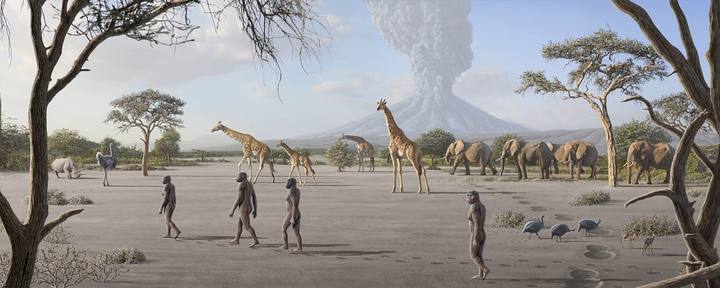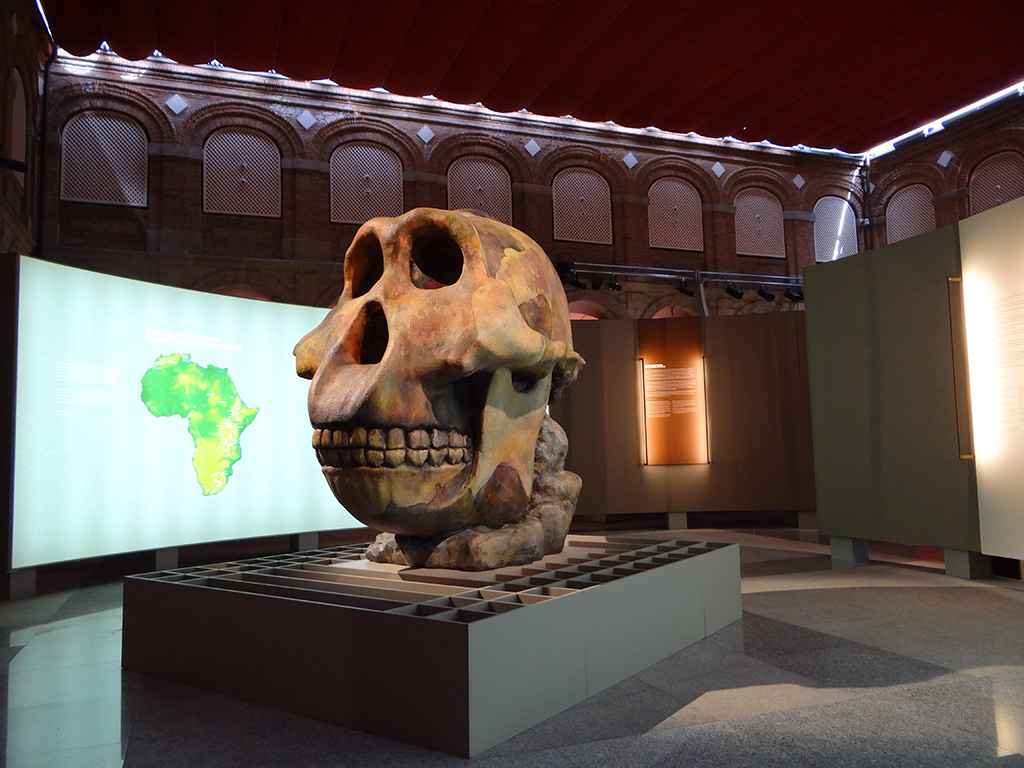The Regional Archaeological Museum of Alcalá de Henares shows an exclusive exhibition about the origin of the man called «Cradle of Humankind«.
From February 10 to July 1, 2014.
Manuel Domínguez-Rodrigo and Enrique Baquedano, Commissioners of the Exhibition, explain what the Cradle of Humankind is: «Who are are? Where do we come from? Why are we here? What are we here for? Where are we headed? As human beings, tríese are a few questions that we have constantly asked ourselves.
We have tried to answer these questions from very diverse fields. When logos can’t find the answers, then we resort to mythos, but we continue enquiring by formulating hypotheses and theories that satisfy this need to understand more.
The natural sciences, such as Geology, Biology, Physics and Chemistry have come together to gradually respond to the questions being framed by philosophers today, but that are of interest to every one of us.
During the mid-nineteenth century the great British Biologist, Charles Darwin, formulated his Teory of Evolution and provided an explanation to our origins based on modifications incorporated by natural selection. Darwin also pointed towards the African Continent as possible «Cradle of Humankind» in response to the wide variety of apes found even today in the Sub- Saharan world.
Currently this is an affirmation accepted almost unanimously by the scientific community, but during the nineteenth century the African Hypothesis by Darwin went almost unnoticed, ignored by prevailing Euro-centrism.
For nearly a century every hypothesis passed via Europe, then later through Java and even China in 1924, the discovery of Australopithecus africanus in South Africa did not arouse any interest and it was not until the 1960’s when new discoveries resolved the issue in favor of Africa.
Ever since 1959, when Louis and Mary Leakey discovered Zinjanthropus boisei at Olduvai Gorge in northern Tanzania, the findings of fossilized remains of hominids and evidence of cultural behavior have increased exponentially. The methods which scientists utilize in order to extract every piece of Information found within the results of our efforts have also increased significantly.
In the exhibition we hope to show, although somewhat condensed, the current understanding of this matter. At the same time, we wish to show the results of the work of archaeologists in Africa, especially in Tanzania, and reflect upon the countless questions that we still do not have any sound answers for. Just as the wise Penelope and her tapestry, African Archaeologists realize that as they add more tiles to the Mosaic of Human Evolution we only open more gaps in the ship’s hull that is the knowledge of our ancestors.
But maybe this is the great challenge, which year after year leads us to the African earth to sift through the soil and read the most beautiful and exciting pages of our History».
 Laetoli hominin footprints. Replica.
Laetoli hominin footprints. Replica.
Additional information:
- See news and video published by El Mundo newspaper.
- Regional Archaeological Museum
Where and when
- Plaza de las Bernardas s/n (Alcalá de Henares)
- Free entrance.
- Tuesday to Saturday: 11:00 a 7:00 pm
- Sunday and holidays: 11:00 a 3:00 pm
- Closed on Mondays.
- Tel: 91 879 66 66
- From February 10 to July 1, 2014

Sigue disfrutando de Dream Alcalá:
- Telegram: Recibe nuestras noticias y contenido exclusivo (clic aquí).
- Newsletter: Recibe cada tarde un correo con nuestras últimas noticias (clic aquí).
- YouTube: Suscríbete para ver nuestros mejores vídeos (clic aquí).
 Sé tú el periodista: envíanos tus fotos o noticias a través de Telegram.
Sé tú el periodista: envíanos tus fotos o noticias a través de Telegram.



